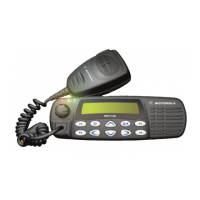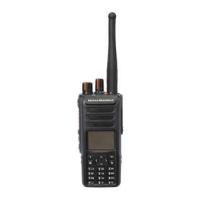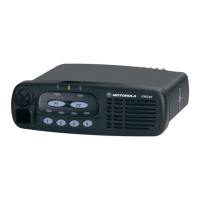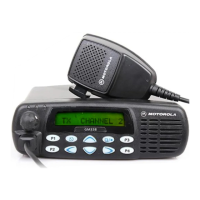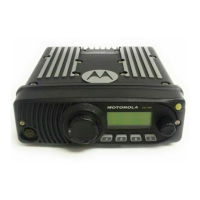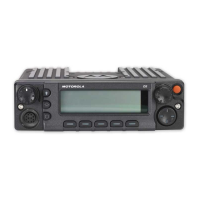Do you have a question about the Motorola PM1500 and is the answer not in the manual?
FCC compliance statement for digital devices regarding interference.
Crucial safety notice regarding product usage and RF exposure.
Legal rights concerning the radio's software and its use.
Permissions and restrictions for reproducing the manual.
Legal statement limiting liability for inaccuracies or product use.
Notation indicating procedures that could result in injury or death.
Notation indicating procedures that could damage equipment.
Notation for essential information or reminders.
Illustrates how terms or features are presented in the manual.
Introduces fundamental radio operation and features.
Initial steps for using the radio and its capabilities.
Explanation of Motorola's upgradeable software technology.
Identifies the primary physical parts of the radio system.
Details the function and customization of the emergency button.
Explains the status indications provided by the LED light.
Information on the use of customizable function buttons.
Describes the function of the Push-To-Talk button.
Guide to using the radio's main user interface.
Step-by-step instructions for powering up the radio device.
Instructions for adjusting the audio output level.
Controls for screen and button illumination.
Usage instructions for navigation with the keypad microphone.
Definition of channels used for direct communication.
How radio modes are configured by system managers.
How the radio's screen indicates current operational conditions.
Managing and adjusting various radio functions.
Guide to understanding radio operational status.
Explanation of the status lights on the control head.
Description of audio cues for radio events.
Overview of essential radio functionalities.
How to listen to active channels.
Procedure for choosing communication channels.
How to listen for transmissions on a channel.
Fine-tuning signal reception for clarity.
How to send voice communications.
Feature limiting continuous transmission duration.
Summary of frequently accessed radio operations.
Priority access for emergency situations.
Procedure to send an emergency alert.
Steps for activating emergency communication.
Important notes and behaviors during emergency situations.
How the radio monitors multiple channels.
How to activate or deactivate the scanning feature.
Temporarily removing unwanted channels from scans.
Feature for temporarily suspending scanning.
Using vehicle signals for radio alerts.
How to enable horn and light alerts.
System behavior when external alarms are active.
Procedure to disable a specific alarm type.
Procedure to disable re-arming alarms.
Feature for identifying the transmitting radio.
Function to selectively alert another radio unit.
Step-by-step instructions for initiating a Call Alert.
Overview of common conventional radio features.
Feature enabling better control of radio operations by system managers.
How to select and use talkgroups.
Direct mobile-to-mobile communication method.
Feature for private conversations and unit status checks.
Steps to start a private call to another unit.
How to check the radio's identification number.
Procedure to modify stored unit IDs.
Procedure to change names associated with unit IDs.
Safety warning regarding radio cables and potential voltage.
List and descriptions of approved antenna models.
List and descriptions of approved cable models.
List and descriptions of approved microphone models.
Other approved accessories like switches and relays.
List and descriptions of approved speaker models.
Mounting hardware accessories for the radio.
Details on channel usage for maritime operations.
Procedure for making distress calls at sea.
Designated channel for non-commercial maritime communications.
FCC regulations for maritime radio frequencies.
Reference table of marine radio channels and frequencies.
The initial screen shown after radio self-test.
Liquid-Crystal Display technology used for the screen.
A programmed combination of operating parameters.
Automatic configuration of operations based on selected mode.
Listening to active channels without transmitting.
Button used to activate the transmitter.
A facility that re-transmits signals to extend range.
Radio Frequency, the electromagnetic spectrum used for communication.
Audio circuit muting based on signal strength.
Specific terms and duration of the product warranty.
General terms and conditions of the warranty.
Legal rights applicable under state law.
Procedure for obtaining warranty repair.
Exclusions from the product warranty coverage.
Terms related to patents and software usage.
The jurisdiction governing the warranty.
Information on maintenance and repair services offered.

